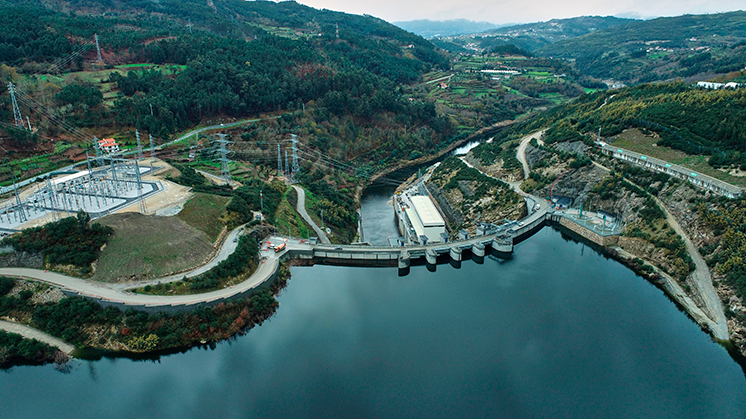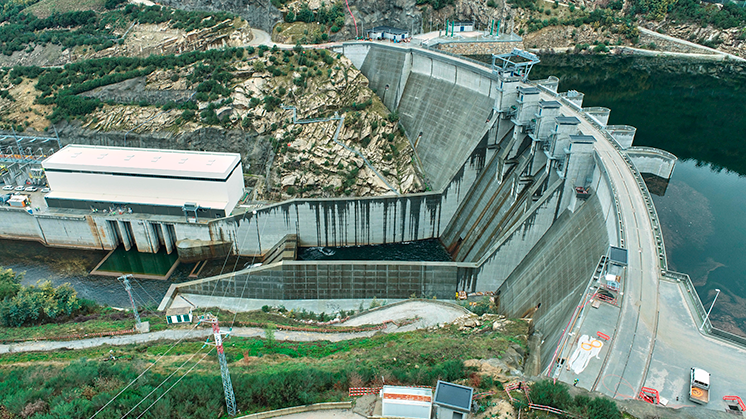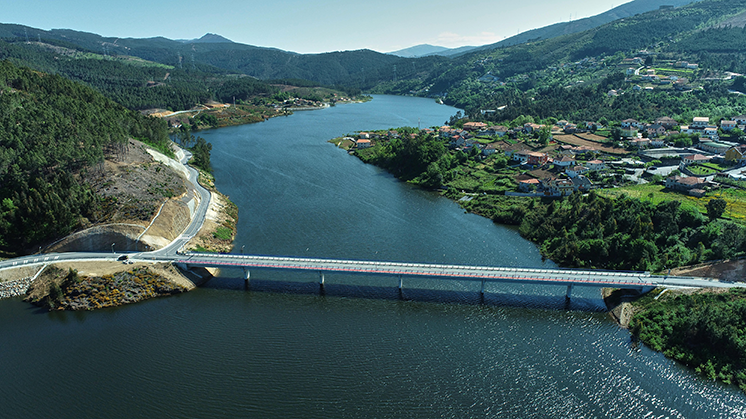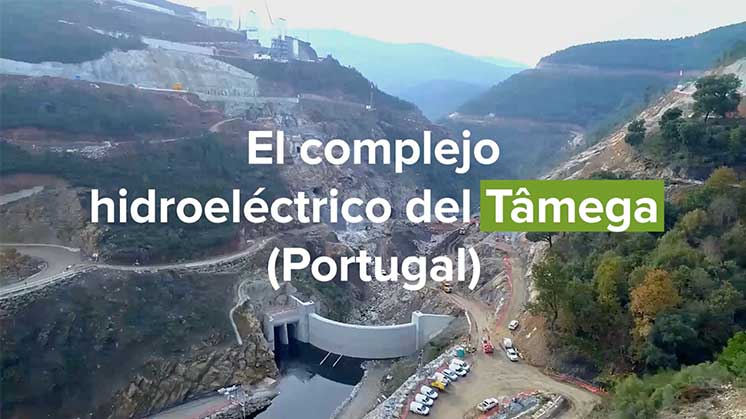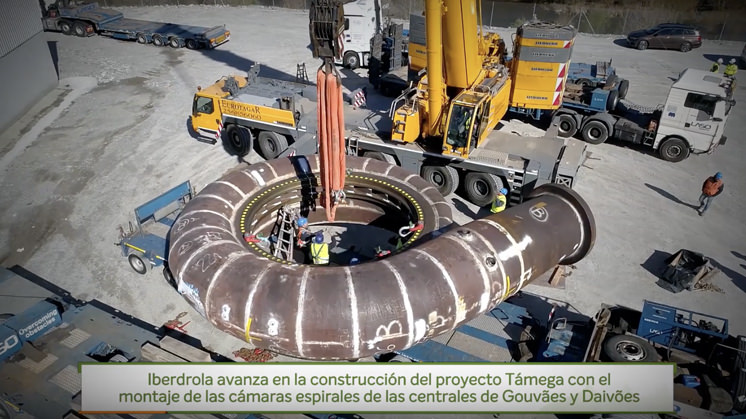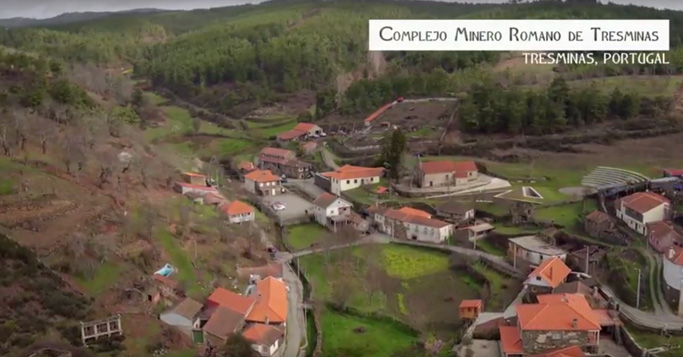Gigabatería del Tâmega
Tâmega: uno de los mayores proyectos hidroeléctricos realizados en Europa en los últimos 25 años
Energía hidroeléctrica Almacenamiento energético Portugal Instalaciones operativas
El complejo hidroeléctrico de Tâmega, situado en el norte de Portugal, es una de las mayores iniciativas energéticas en la historia del país y uno de las mayores instalaciones de almacenamiento de energía de Europa. Este sistema incluye tres presas con una capacidad conjunta de 1.158 MW y dos parques eólicos que alcanzarán los 274 MW. La construcción de Tâmega ha marcado un hito en la transición hacia un modelo energético más limpio y eficiente.

Gigabatería del Tâmega




El proyecto hidroeléctrico Tâmega Enlace externo, se abre en ventana nueva. está formado por tres centrales: Gouvães, Daivões y Alto Tâmega, ubicadas sobre el río Tâmega, un afluente del Duero localizado en el norte de Portugal, cerca de Oporto. Las tres centrales suman una capacidad instalada de 1.158 MW, lo que supone un aumento del 6 % de la potencia eléctrica total instalada en 2024 en el país.
Enlace externo, se abre en ventana nueva. está formado por tres centrales: Gouvães, Daivões y Alto Tâmega, ubicadas sobre el río Tâmega, un afluente del Duero localizado en el norte de Portugal, cerca de Oporto. Las tres centrales suman una capacidad instalada de 1.158 MW, lo que supone un aumento del 6 % de la potencia eléctrica total instalada en 2024 en el país.
El complejo es capaz de producir 1.766 GWh al año, suficiente para satisfacer las necesidades energéticas de los municipios vecinos y de las ciudades de Braga y Guimarães (440.000 hogares). Además, esta gran infraestructura renovable tiene una capacidad de almacenamiento de 40 millones de kWh, equivalente a la energía que consumen 11 millones de personas durante 24h en sus hogares.
Tâmega permite diversificar las fuentes de producción, evitando la importación de más de 160 mil toneladas de petróleo al año y la emisión de 1,2 millones de toneladas de CO2 anuales. Además, fomenta la actividad económica y el empleo en la región, ya que durante toda la fase de construcción se han generado hasta 3.500 puestos de trabajo directos y 10.000 indirectos —el 20 % de los cuales proviene de los municipios vecinos—, a través de más de 100 proveedores, 75 de ellos portugueses.
El proyecto, que ha supuesto una inversión superior a los 1.500 millones de euros, cuenta con la financiación del Banco Europeo de Inversiones (BEI). En julio de 2018, la entidad entregó a Iberdrola 500 millones de euros, los primeros de los 650 aprobados en total para financiar este desarrollo.
El proyecto tiene además recogidas, en su Declaración de Impacto Ambiental (DIA), diversas medidas de compensación de sistemas ecológicos, como la reforestación de más de 1.000 hectáreas, la plantación de 17.000 alcornoques o acciones para mejorar las poblaciones de fauna protegida existente en el entorno.
En cuanto a su entrada en funcionamiento, Gouvães y Daivões empezaron a entrar en operación a principios de 2022 y Alto Tâmega está operativa desde finales de 2024.
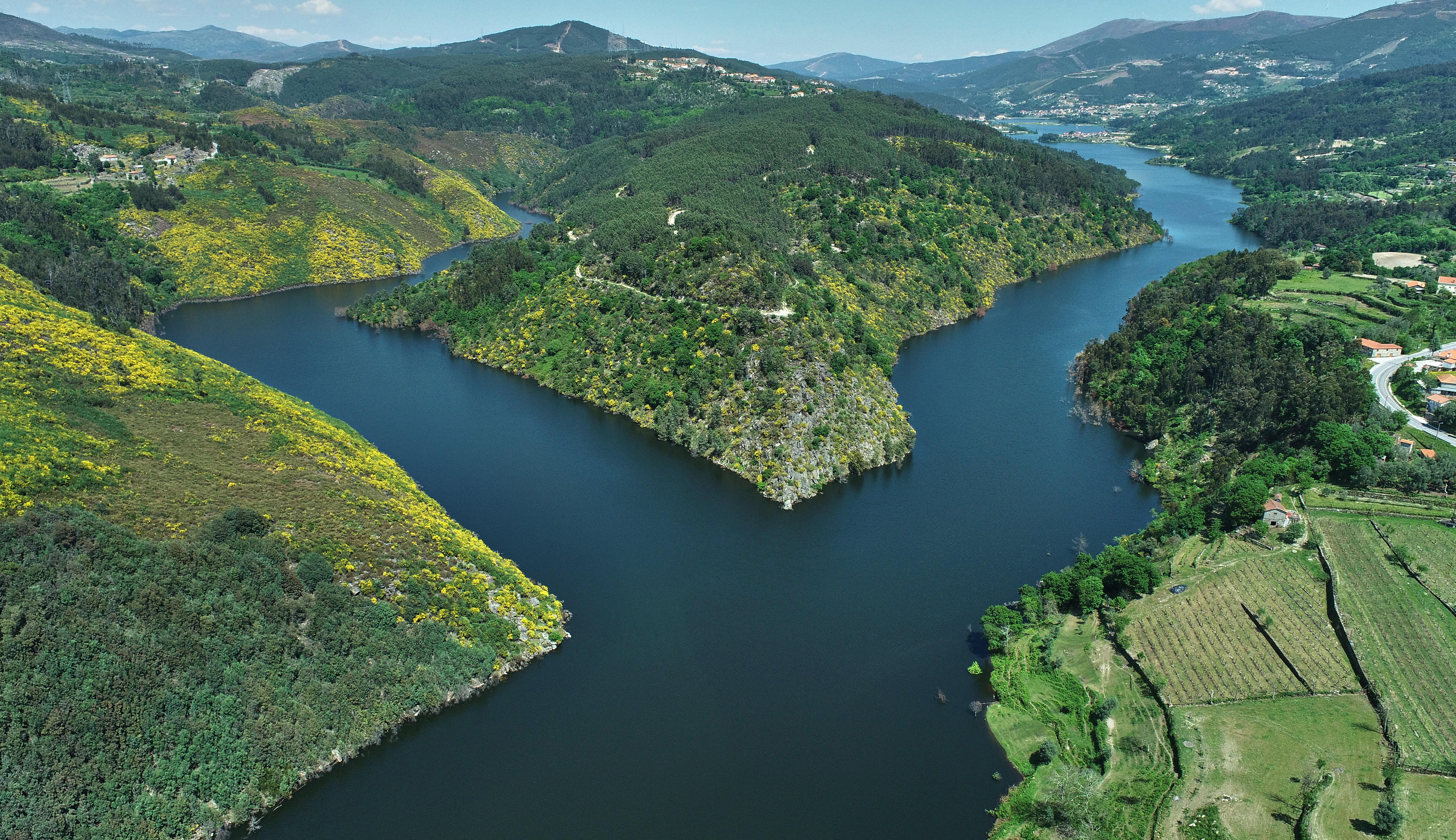
Construcción del Complejo Hidroeléctrico Tâmega
Tâmega: el complejo hidroeléctrico más innovador de Europa.
La central hidroeléctrica de bombeo de Gouvães permitirá almacenar suficiente energía para abastecer a dos millones de portugueses durante 24 horas.
El proyecto Tâmega alcanza su fase final con el llenado de los embalses, que facilitarán el comienzo de las pruebas de turbinación y bombeo.
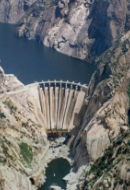
Qué es la energía hidroeléctrica
Descubre cómo funcionan las centrales hidroeléctricas.

Tipos de presas
Existen diferentes tipos de presas según sus materiales o sus mecanismos.
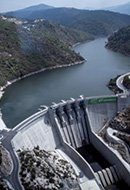
Términos de la energía hidráulica
Los 10 conceptos más relevantes en la energía hidraúlica.
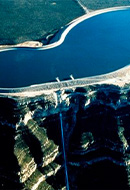
Central hidroeléctrica de bombeo
¿Sabes para qué sirven las centrales hidroeléctricas de bombeo?
Una planta híbrida
A las centrales hidroeléctricas se sumarán dos parques eólicos, que convertirán el complejo en una planta de generación híbrida. En 2024 hemos obtenido la autorización ambiental final para construir el que se convertirá en uno de los mayores parques eólicos de Portugal con una potencia de 274 MW.
Se trata de las primeras plantas de este tipo con conexión a la red que se van a construir en el área circundante de las tres centrales (Gouvães, Daivões y Alto Tâmega) que conforman el complejo Tâmega.
Esta circunstancia permitirá mejorar la eficiencia del sistema eléctrico: la producción eólica provee energía a los consumidores en los periodos de mayor consumo, mientras que el sistema de bombeo se alimentará cuando no hay demanda en la red.
La compañía podrá gestionar la oferta y la demanda entre la hidroeléctrica y la eólica en función de la disponibilidad de ambos recursos, pero también de la dinámica de los precios del mercado.
Gigabatería del Tâmega


- Aprovechamiento Hidroeléctrico de Alto Tâmega
- Altura de presa: 104,5 m
- Longitud circuito hidráulico: 50 m
- Salto bruto: 87 m
- Capacidad instalada: 160 MW
- Superficie de embalse: 468 ha
- Volumen de embalse: 132 hm³
- Aprovechamiento Hidroeléctrico de Daivões
- Altura de presa: 77,5 m
- Longitud circuito hidráulico: 250 m
- Salto bruto: 64,5 m
- Capacidad instalada: 118 MW
- Superficie de embalse: 340 ha
- Volumen de embalse: 56,2 hm³
- Aprovechamiento Hidroeléctrico de Gouvães
- Altura de presa: 34 m
- Longitud circuito hidráulico: 7,640 m
- Salto bruto: 657 m
- Capacidad instalada: 880 MW
- Superficie de embalse: 176 ha
- Volumen de embalse: 13,7 hm³

Sistema de Bombeo
- La única tecnología que almacena grandes cantidades de energía de forma eficiente.
- Es esencial como respaldo y apoyo a otras energías renovables, especialmente la eólica y la fotovoltaica.
- Contribuye a la estabilidad del sistema eléctrico gracias a su gran flexibilidad para dar respuesta a las variaciones de la demanda.
- Modera los precios de la electricidad al producir energía almacenada en los momentos en que el sistema más la necesita.
- Funcionamiento independiente de la hidraúlica.
 VER INFOGRAFÍA: Gigabatería del Tâmega [PDF]
VER INFOGRAFÍA: Gigabatería del Tâmega [PDF]
Las obras de construcción de Tâmega
La creación del embalse de Daivões ha implicado, a nivel de reposiciones, la construcción de un puente de unos 200 m de longitud y 35 m de altura, más de 5 km de líneas eléctricas, más de 7 km de carreteras, así como dos plantas de tratamiento de aguas residuales.
Este embalse de Daivões es el depósito inferior de la Central Hidroeléctrica de Bombeo de Gouvães, de 880 MW. En enero de 2022 Iberdrola puso en marcha el primer grupo energético de la central hidroeléctrica – una turbina de 220 MW de capacidad –, comenzando a entregar electricidad limpia a la red desde la gigabatería del Tâmega.
Esta central es reversible, es decir, permite almacenar agua del embalse de Daivões en el de Gouvães, aprovechando los más de 650 metros de diferencia de cota entre ambos. De esta forma, se puede bombear la energía cuando haya un exceso de producción y recuperarla cuando sea necesario. Su capacidad de almacenamiento permite el suministro continuo de electricidad al área metropolitana de Oporto durante 24 horas.
En marzo de 2021 concluyó el primer llenado del embalse de Daivões, cuya central asociada dispone de una capacidad de 118 MW gracias a la instalación de tres grupos. Con él se culminó un gran trabajo de diseño y ejecución de una presa de hormigón de tipo "arco de gravedad" de 77,5 m de altura y 265 m³ de longitud de coronación, en la que se han empleado 240.000 m³ de hormigón. El embalse que genera tiene una superficie de 340 ha y un volumen de 56,2 hm³.
La cantera de Gouvães ha producido áridos para su uso exclusivo en los hormigones del complejo hidroeléctrico del Tâmega; entre ellos, ha provisto de los necesarios para la construcción de la última presa de Alto Tâmega. Esta cantera ya ha superado la producción de 2 millones de toneladas de áridos, el equivalente al peso de 5.000 Boeing 747 debidamente equipados y con pasajeros.
Conoce más sobre el complejo hidroeléctrico del Tâmega.
Avance de las obras del proyecto Tâmega.
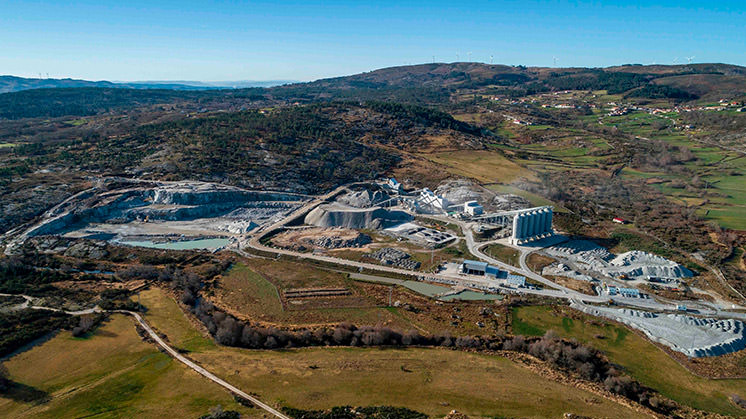
"Continuaremos impulsando la transición energética en este país y, con ello, la creación de riqueza y bienestar para todos los portugueses"
Ignacio Galán, presidente del Grupo Iberdrola
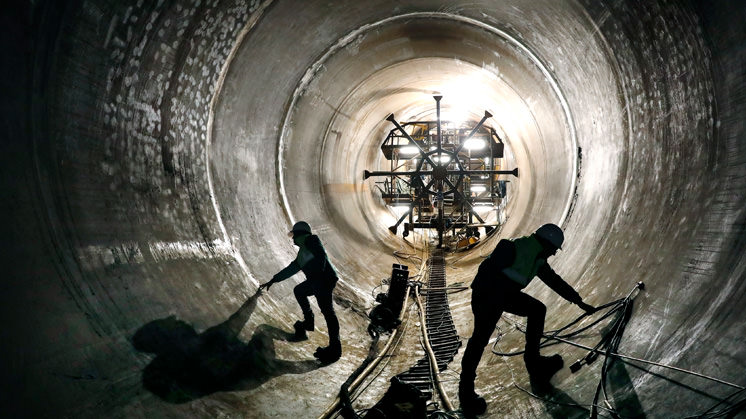
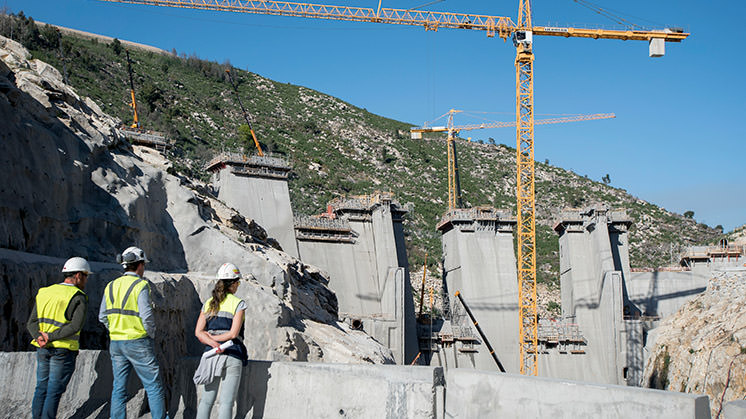
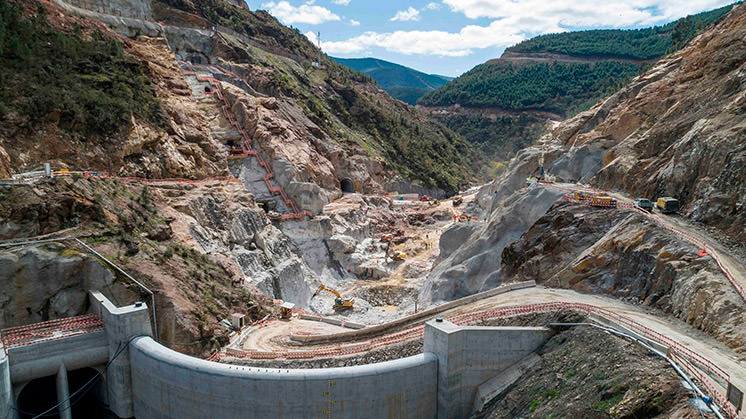
La tecnología de bombeo, el almacenamiento más eficiente
La gigabatería del Tâmega aporta casi 900 MW de capacidad de bombeo al sistema eléctrico portugués, lo que ha supuesto un incremento superior al 30 % respecto a los megavatios de bombeo de los que disponía el país.
El almacenamiento eficiente de energía es un pilar fundamental para el proceso estratégico de estabilizar los precios en el mercado y evitar la volatilidad en los márgenes. En Iberdrola somos líderes en la tecnología de bombeo, el método de almacenamiento energético más eficiente a día de hoy, al no generar ningún tipo de emisión contaminante a la atmósfera y presentar un rendimiento muy superior a las mejores baterías del mercado.
Plantas hidroeléctricas como la del Tâmega son una salvaguarda para el sistema eléctrico. La mayor instalación de estas características en Europa es el complejo de Cortes-La Muela, ubicado en Valencia.
Plan de acción sociocultural y medioambiental
-
Este Plan, desarrollado en el contexto del proyecto Tâmega y firmado con las diferentes Cámaras Municipales involucradas, incluye una cifra récord de más de 50 millones de euros para el desarrollo económico, social y cultural de la región del Alto Tâmega.
El objetivo de este programa de ayudas es contribuir al desarrollo de la región y a la mejora de las condiciones de vida de la población —se han generado 3.500 empleos directos y 10.000 indirectos—, así como preservar el entorno del proyecto desde el punto de vista medioambiental. Las acciones planificadas se llevan a cabo en los municipios de Ribeira de Pena, Vila Pouca de Aguiar, Cabeceiras de Basto, Boticas, Chaves, Valpaços y Montalegre.
Un ejemplo lo encontramos en la región de Boticas, donde Iberdrola ha participado en el desarrollo del parque Boticas, Naturaleza y Biodiversidad con la construcción de alojamientos para los visitantes y la promoción de acciones de compensación para la flora y fauna del entorno.
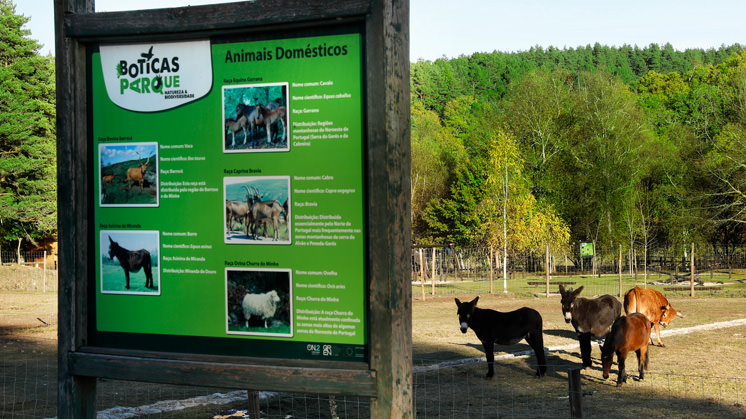 Parque Boticas, Naturaleza y Biodiversidad.
Parque Boticas, Naturaleza y Biodiversidad.La compañía va a llevar a cabo este tipo de acciones de compensación de la flora y fauna locales tanto en Boticas como en Cabeceiras de Basto, Ribeira de Pena, Vila Pouca de Aguiar y Chaves, a través de la firma de sendos protocolos de colaboración. Entre las acciones previstas, destacan la gestión, recuperación y conservación de poblaciones forestales de especies autóctonas, la recuperación de bosques de ribera y mejora de la conectividad de los cursos fluviales, la plantación de alcornoques y la mejora de los ecosistemas acuáticos.
Además de estos proyectos, Iberdrola financia otras actividades como la mejora de las redes de saneamiento y abastecimiento público, optimización de instalaciones deportivas, refuerzo de los equipos de los bomberos, nuevas zonas recreativas, etc.; y también ha cofinanciado la construcción de nuevas y emblemáticas instalaciones en la zona, como el Camping Alvão Village, el Centro Hípico de Pedras Salgadas o el Balneario Pedagógico en Vidago.
Con este tipo de ayudas, Iberdrola consolida su compromiso con la sostenibilidad y la responsabilidad social.
-
Complejo minero romano de Tresminas, Portugal. Locución del vídeo [PDF] Enlace externo, se abre en ventana nueva.
En el marco de la construcción del gran Complejo Hidroeléctrico del Tâmega, Iberdrola ha promovido una visita al Yacimiento minero de oro romano de Tresminas, proyecto que se enmarca en las acciones de compensación llevadas a cabo por la compañía de acuerdo a lo establecido en la Declaración de Impacto Ambiental.
A través de una inversión de 1,84 millones de euros en el Complejo minero de Tresminas, Iberdrola demuestra su compromiso para el desarrollo económico, social, cultural y ambiental de las comunidades donde está presente. La empresa colabora con el Ayuntamiento de Vila Pouca de Aguiar y la Dirección Regional de Cultura del Norte de Portugal, en la puesta en valor histórica, patrimonial y arqueológica de la región. Esta inversión se inició en 2016 y está prevista hasta 2023.
La empresa ha destinado, entre 2016 y finales de 2018, unos 850.000 euros que, a lo largo de este año, se traducirán en acciones entre las que se incluyen:
- La financiación del equipo técnico.
- La continuación de los estudios históricos, geológicos y de fauna y flora de Tresminas.
- La adquisición de equipo para visitas a las cortas y galerías mineras, su limpieza y / o desobstrucción.
- La construcción del edificio de apoyo y estructuras y equipos de apoyo a la circulación en las cortas y galerías mineras.
Tresminas, una de las mayores exploraciones auríferas
El Complejo Minero Romano de Tresminas fue, durante la época romana, una de las mayores exploraciones auríferas en yacimiento primario del conventus bracaraugustanus y uno de los más significativos del Noroeste Peninsular: se estima que entre los siglos I y III d.C. se aprovecharon en Tresminas alrededor de 25 toneladas de oro puro, lo que implicó la expulsión de millones de toneladas de roca mediante la excavación de cortas a cielo abierto.
Iberdrola se compromete con esta iniciativa a preservar el patrimonio local y nacional de la región de Tresminas, así como a divulgar la importancia arqueológica e histórica de este complejo minero e impulsar el turismo de la zona.
La inversión realizada por la compañía permite la realización de un conjunto de acciones que benefician al Complejo Minero de Tresminas, posibilitando su futura declaración como Parque Arqueológico, lo que salvaguardará los materiales asociados a la explotación minera romana y el paisaje de la zona.
Tresminas forma parte de uno de los pilares estratégicos en términos de turismo cultural del Municipio de Vila Pouca de Aguiar. Y ya se han visto los resultados de los esfuerzos realizados durante los últimos meses, tanto a nivel local como regional, tras la puesta en valor patrimonial y turística de Tresminas, incrementándose el número de visitantes a la región.
Alto Tâmega, candidata para ser patrimonio de la humanidad
De hecho, estos resultados han sido apoyados por la actividad en asociación transfronteriza con Las Médulas, desde 1997 Patrimonio Mundial de la UNESCO y una de las más importantes y reconocidas minas romanas, en la región de El Bierzo, España. La candidatura se realiza de forma conjunta, en un proyecto cultural común, que tiene como objetivo la puesta en valor del legado minero romano en la Península Ibérica. En el año 2017, este protocolo de cooperación entre el Municipio de Vila Pouca de Aguiar y la Fundación Las Médulas, es apoyado por entidades como la Direção Regional de Cultura do Norte y la Dirección General de Patrimonio Cultural de la Junta de Castilla y León. Esta alianza tiene como objetivo fortalecer aún más la candidatura de esta zona de Portugal como Patrimonio de la Humanidad de la UNESCO.
Iberdrola, líder mundial en energía renovable
En Iberdrola, estamos comprometidos con la energía renovable desde hace más de dos décadas como un pilar fundamental sobre el que construir nuestro modelo de negocio seguro, limpio y competitivo. Gracias a esta visión, somos hoy en día líderes mundiales en energía renovable, alcanzando los 44.675 MW renovables operativos a cierre del primer trimestre de 2025.
Este compromiso se refleja en nuestro Plan estratégico en el que destinaremos a renovables 15.500 millones de euros brutos. De este total, más de la mitad está focalizada en eólica marina en Estados Unidos, Reino Unido, Francia y Alemania; un 28%, en eólica terrestre y un 18%, en solar.





